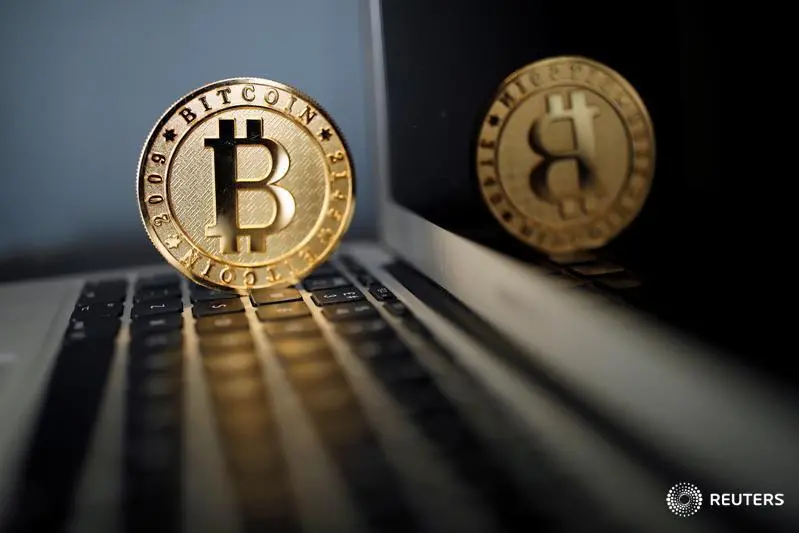PHOTO
POUGHKEEPSIE - Bitcoin and other crypto-currencies are a bit like South Sea Company shares: unanalyzable, but here to stay. They offer a government-proof store of wealth, for instance, as well as real technological advances along with the scams. More stable prices are, however, needed for long-term value. The company at the center of the famous 1720 bubble published no accounts and its value mostly depended on an indeterminate scheme for taking over government debt. There were no fundamental measures of its worth, a characteristic shared by crypto-currencies.
Nevertheless, after the bubble burst the South Sea Company survived until 1853, and two insurance companies created during the headiest days only disappeared through takeovers in the 1960s. Crypto-currencies, similarly, embody elements that should endure.
For one thing, they provide a store of wealth which, despite the risk of hacking, provides security against economically incompetent or confiscatory governments. In this, as with Swiss bank accounts before U.S. authorities forced the files open, full anonymity helps – something not provided by the original bitcoin. Other crypto-currencies like Monero and Komodo have gotten a lot closer to that goal.
Of course criminals like being invisible, but so do some law-abiding rich and sometimes not-so-rich people protecting themselves against risks ranging from local-currency hyperinflation to expropriation.
For another, there’s the technology. The blockchain, a public digital ledger that underpins bitcoin, is potentially useful in all kinds of ways, especially in payment systems. Banks are adapting it accordingly. Crypto-currencies can be used to simplify, speed up and make cheaper all kinds of transactions, too.
Coding whizzes the world over have been working on new ways to push the technology forward. Some have issued new crypto-currencies to fund their work – so-called initial coin offerings. Based on often flimsy information, these can look a lot like ways to part careless people from their (non-digital) money. But they also fuel the development of potentially valuable new ideas.
All that said, crypto-currencies are looking bubbly and volatile. Despite crashing from a record high above $11,000 on Wednesday to little more than $9,000 on Thursday, bitcoin has still surged roughly 10-fold in value this year. Well over 1,000 varieties of digital coins and tokens are together worth around $300 billion, according to coinmarketcap.com.
Even the South Sea Company eventually settled down. Its shares traded within 30 percent either side of par value for most of the 133 years following the bubble’s collapse. For crypto-currencies to become realistic investments, or even reliable payment mechanisms, their prices need to stabilize.
CONTEXT NEWS
- Martin Hutchinson is a former investment banker, journalist and Breakingviews columnist who writes a weekly column on economics and finance, “The Bear’s Lair,” and contributes to publications including Agora Financial’s “Crypto Alert” newsletter. Martin is the author of “Great Conservatives” (Academica Press, 2004) and, with Kevin Dowd, of “Alchemists of Loss” (Wiley, 2010).
- SIGN UP FOR BREAKINGVIEWS EMAIL ALERTS http://bit.ly/BVsubscribe (Editing by Richard Beales and Kate Duguid)
© Reuters News 2017
Nevertheless, after the bubble burst the South Sea Company survived until 1853, and two insurance companies created during the headiest days only disappeared through takeovers in the 1960s. Crypto-currencies, similarly, embody elements that should endure.
For one thing, they provide a store of wealth which, despite the risk of hacking, provides security against economically incompetent or confiscatory governments. In this, as with Swiss bank accounts before U.S. authorities forced the files open, full anonymity helps – something not provided by the original bitcoin. Other crypto-currencies like Monero and Komodo have gotten a lot closer to that goal.
Of course criminals like being invisible, but so do some law-abiding rich and sometimes not-so-rich people protecting themselves against risks ranging from local-currency hyperinflation to expropriation.
For another, there’s the technology. The blockchain, a public digital ledger that underpins bitcoin, is potentially useful in all kinds of ways, especially in payment systems. Banks are adapting it accordingly. Crypto-currencies can be used to simplify, speed up and make cheaper all kinds of transactions, too.
Coding whizzes the world over have been working on new ways to push the technology forward. Some have issued new crypto-currencies to fund their work – so-called initial coin offerings. Based on often flimsy information, these can look a lot like ways to part careless people from their (non-digital) money. But they also fuel the development of potentially valuable new ideas.
All that said, crypto-currencies are looking bubbly and volatile. Despite crashing from a record high above $11,000 on Wednesday to little more than $9,000 on Thursday, bitcoin has still surged roughly 10-fold in value this year. Well over 1,000 varieties of digital coins and tokens are together worth around $300 billion, according to coinmarketcap.com.
Even the South Sea Company eventually settled down. Its shares traded within 30 percent either side of par value for most of the 133 years following the bubble’s collapse. For crypto-currencies to become realistic investments, or even reliable payment mechanisms, their prices need to stabilize.
CONTEXT NEWS
- Martin Hutchinson is a former investment banker, journalist and Breakingviews columnist who writes a weekly column on economics and finance, “The Bear’s Lair,” and contributes to publications including Agora Financial’s “Crypto Alert” newsletter. Martin is the author of “Great Conservatives” (Academica Press, 2004) and, with Kevin Dowd, of “Alchemists of Loss” (Wiley, 2010).
- SIGN UP FOR BREAKINGVIEWS EMAIL ALERTS http://bit.ly/BVsubscribe (Editing by Richard Beales and Kate Duguid)
© Reuters News 2017












